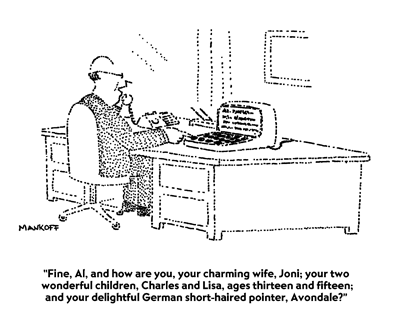
Late last month
on February 26th, IATA released the 2nd Edition of its Cargo XML Manual
and Toolkit.
Add this latest entry to a number
of manuals published by IATA, some of them well known and recognized,
such as the IATA Dangerous Goods Regulations.
Cargo XML is priced at a hefty $999
($649 for members).
Given the fiasco—there is no
other reasonable term for it—IATA has encountered with its EasyDGR
SAAS in-house solution, the first (and likely last) electronic product
with which IATA had targeted shippers, it is not unreasonable to wonder
about IATA’s ability to take their cargo standards into the digital
age.
While the Cargo XML Manual and Toolkit
is based on the CEFACT standards brought forward by the United Nations,
and incorporates the requirements of other significant stakeholders such
as the World Customs Organization, IATA’s claim that its XML Manual
is ‘multimodal’ in application is probably more wishful thinking
than fact.
Firstly, when you add it all up, IATA’s
publications tend to come at significant cost.
For example, by comparison, the modal
regulations for European road transport, the ADR, are published biannually
and go for about $60 USD and the maritime regulations, the IMDG code,
is also published biannually and sells for $49 USD; CFR regulations cost
between $42 and $55 USD.
The IATA DGR costs a whopping $319
USD while the Airport Handling Manual goes for $579 USD in its printed
version and the combo of printed manual and CD for $1,145 USD.
It’s worth noting that the Labelmaster
AirShipper is a reasonable, alternate manual for the purpose of air shipping—and
it goes for $85 USD.
Since IATA is or has not been on the
best terms with stakeholders from other modes of transport, and even with
organizations from within the air transport industry, such as FIATA, there
is reasonable doubt that an IATA manual would be recognized by anyone
other than the ‘usual suspects’ or IATA’s strategy partners,
member airlines, and the few IATA-friendly governmental stakeholders.
Last but not least, IATA has lost
considerable in-house expertise and knowledge in the last few years, and
given their poor track record with EasyDGR and E-AWB implementation, their
move to claim expert and standard-governing recognition outside the air
transport industry shows considerable chutzpah.
That a number of IT solution providers—among
them Kewill, New Age Software Solution, Hans Infomatic, GLS HK, Mercator,
Parse2, and Hexaware Technologies—have already licensed the IATA
XML standards, does not mean that others from outside the air transport
industry will consider doing the same.
Why a player not directly affiliated
with the air transport core business—such as GHA’s and others—should
purchase Cargo XML from IATA rather than simply adopting the CEFACT and
WCO requirements remains a bit of a mystery.
Ironically, recognition of IATA e-standards
undoubtedly requires support from stakeholders IATA has managed to antagonize
in the past few years, such as the IMO (International Maritime Organization),
FIATA, IFALPA, and ACI as well as some regulatory bodies.
For the record, IATA Dangerous Goods
Regulations (DGR), which are undoubtedly the “field manual for DG
transport within the airline industry” are almost never recognized
as a legal standard by CAA’s and their like.
The bottom line is that it is always
the user’s responsibility to ensure that in utilizing the IATA DGR
they meet the requirements of the legal foundation, the ICAO Technical
Instructions that are published—surprise—also biannually.
The latter is a more arduous thought
than one would assume, since the language quality of IATA’s foreign
language editions at times leaves room for improvement, to say the least.
Furthermore, for all these foreign
language editions of IATA manuals, IATA is careful to spell out in the
foreword than only the English version is legally binding, which by itself
is not even correct, since with the exception of a few states which have
elevated IATA manuals to be incorporated into local legislation, compliance
with IATA regulations is only a contractual obligation stipulated by the
IATA standard contract of carriage.
Binding in a legal sense is usually
only the applicable publication from ICAO or other governing body.
One should, in this context, not forget
that IATA is not a regulator but an industry association, so it is not
unfair to say that IATA in drafting standards is comparable to the American
Automobile Association (AAA) drafting highway transport rules in the US.
It is hard to imagine that the very
stakeholders recently retired IATA Director General Giovanni Bisignani
slammed as “being on the wrong track,” “hindering business
and trade” and “bringing forward unsustainable pricing levels”
as well as “unduly burdening the air transport industry” will
now do a 180-degree somersault and adopt any IATA manual as a binding
standard.
IATA’s pricing models and the
fiasco with its EasyDGR SAAS solution might cause some players to carefully
examine this latest offering.
We may want to keep in mind the communication
IATA sent out to former EasyDGR users more than nine months after the
functionality of this product ceased:
“However,” IATA wrote,
“ongoing DGR rules changes and amendments have made it impossible
to properly update the system logic used to validate that shipper’s
declarations have been correctly created.
“As safety is paramount, the
inability for the underlying system to assure this accuracy forces us
to take this drastic step.”
You can translate the above as: the
rules were too complicated or EasyDGR was not capable of handling the
rules.
Since EasyDGR was develeloped by IATA,
it’s hard to blame someone else.
Indeed it can not be taken too lightly
that IATA, an organization with a considerable track record in the drafting
and development of standards whilst continuously pushing for further implementation
of E-freight and subsequent cost savings ended up describing EasyDGR,
their own system, as “unsafe.”
It is also noteworthy that competing
IT products, among commercial solutions used by IATA member airlines,
seem not to have been plagued with the inability to put the changed rules
into system logic, such as the FedEx ShipManager as well as the DGM and
Labelmaster software solutions.
Both FedEx as a member carrier and
DGM as a training partner are affiliated with IATA.
So
one may wonder why IATA was seemingly unable to draw upon this expertise…
Jens
|




